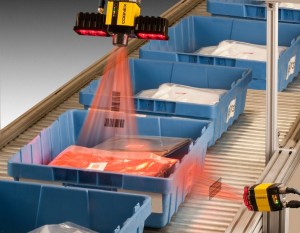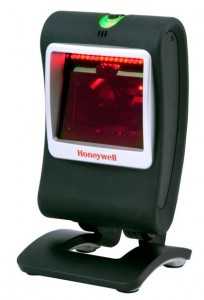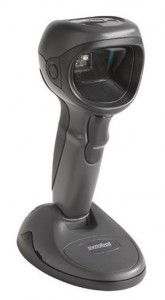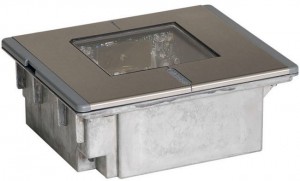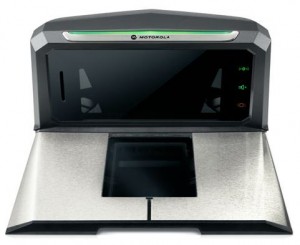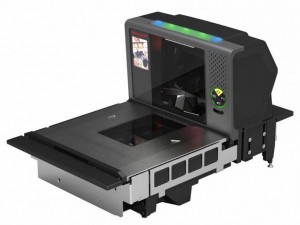If you’ve been following my latest blog series, you’ll know that Part 1 covered linear barcode scanners vs 2D barcode scanners, while Part 2 introduced handheld scanning vs presentation-style scanning, with a focus on handheld scanning considerations. In today’s blog, I will continue the topic of handheld scanning vs presentation scanning, with a focus on the three main presentation scanning styles: fixed mount, on-counter, and in-counter.
Fixed Mount
Fixed mount scanners are generally used in automated environments where the barcodes are being presented to the scanner by machine. Since there is no user to manipulate the scanner or the barcode being presented, fixed mount scanning presents some unique challenges. Considerations must include the speed of travel, orientation and density of the barcode. Faster barcode movement requires faster scan rate. Linear imagers and single line laser scanners must be positioned so that linear barcodes pass by them in the correct orientation. If the orientation is variable, then a 2D imager or omni-directional laser pattern must be used.
Barcodes must be brought within a distance of the scanner that matches the scanner’s focal point by falling into its read range, which varies based on barcode density. Fixed mount scanning can be a simple project costing hundreds of dollars or it can be quite complex, requiring motion equipment to manipulate the objects being scanned and high-end machine vision systems running into many thousands of dollars.
On-Counter
On-counter scanners tend to be used in relatively low-volume scanning environments such as drug stores, convenience stores, libraries, self check-in applications and other point of service uses that fall short of the need for a high-volume, high-cost in-counter solution. Most hand held linear and 2D barcode scanners can function in a stand, programmed to presentation mode where they are in an always on mode or triggered to scan by change of environment in their field of view.
True on-counter scanners are omni-directional, either by multi-line laser scan engines or 2D imagers. As cost and performance of 2D imaging scanners have improved, they continue to gain market share on the countertop. Another reason for this is the ability of 2D imagers to read barcodes on mobile device screens, for applications like electronic coupons, boarding passes and other electronic tickets.
In-Counter
In-counter scanners are almost exclusively the domain of high-volume retail. Larger convenience stores may use a single window under-counter device with an omni-directional laser engine. These not only have much faster read rates than on-counter scanners, they are permanent fixtures that don’t clutter the work space and allow the cashier to present the barcode face down to the read window.
Checkout lanes (including self-checkout) in grocery stores almost exclusively use bioptic scanners. Bioptic scanners have two read windows which, combined with a mirror system and very aggressive scan engines, excel at high speed scanning regardless of the position of the barcode. They frequently include an integrated scale for weighing produce. Bioptic was the exclusive domain of high speed, omni-directional laser scan engines until relatively recently. Honeywell now offers a hybrid laser/2D imager model in the Stratos 2700 and last year Motorola introduced the MP6000, completely based on imaging technology.
Check back later, when I’ll wrap this up in the series finale: Choosing a Barcode Scanner, Part 4.
